
A business of Marsh McLennan
September 26
th
, 2023
analyzing Homeowners Insurance
Availability and affordability
following a catastrophe
A Case Study Presented to the Federal Advisory Committee on Insurance
Prepared by Oliver Wyman Actuarial Consulting
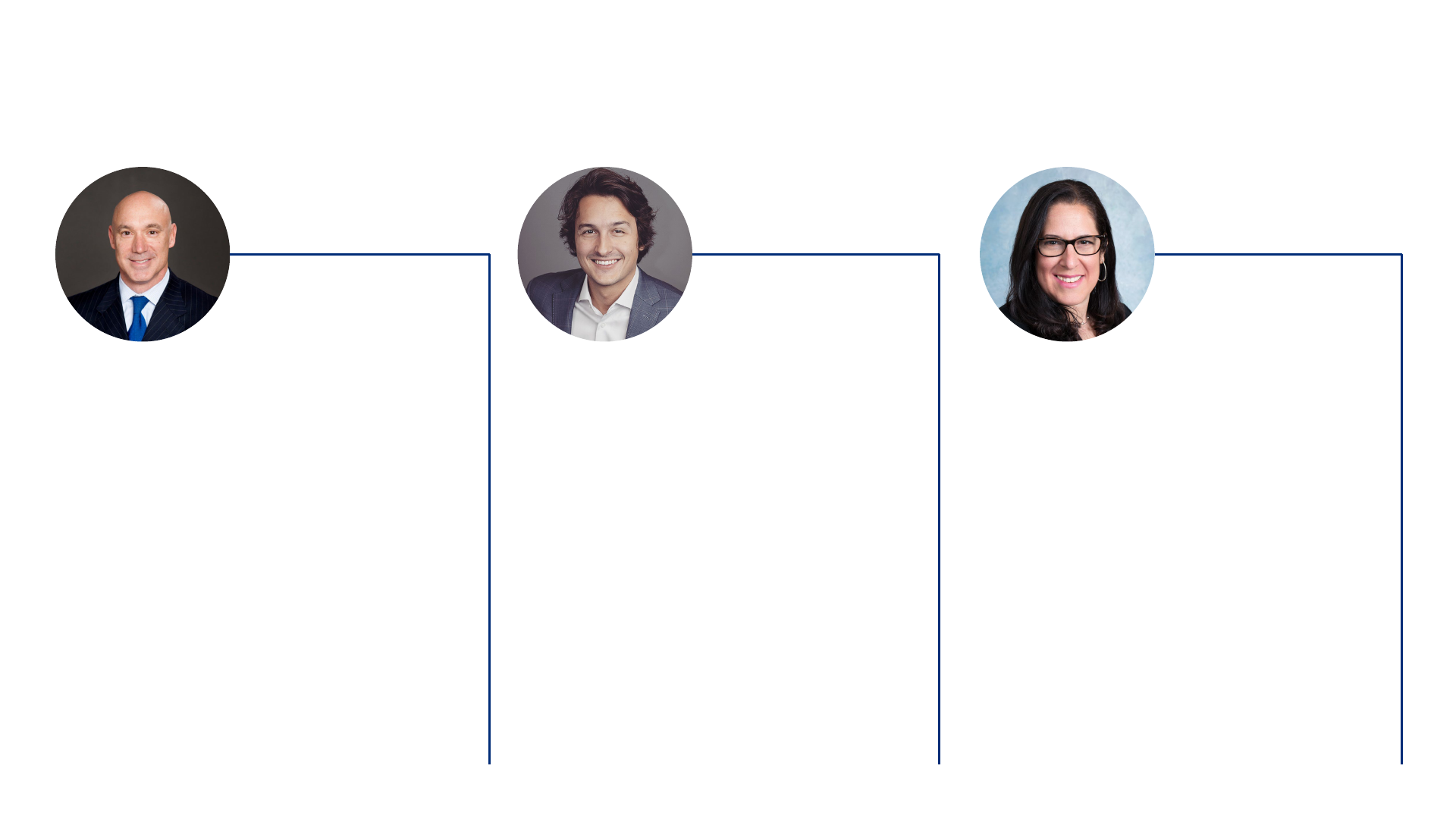
2
© Oliver Wyman
Richard J. Babel, FCAS, MAAA
Etienne Scarborough, FCAS Robin Fitzgerald, FCAS, MAAA
Oliver Wyman Actuarial
Partner
Rich.Babel@oliverwyman.com
Oliver Wyman Actuarial
Senior Manager
Etienne.Scarborough@oliverwyman.com
Oliver Wyman Actuarial
Senior Manager
Robin.Fitzgerald@oliverwyman.com
Rich has provided actuarial services for over 31 years;
the first 15 with insurance carriers and as a consultant
since then.
Rich has extensive experience in pricing and
reserving
for
a variety of business segments, including
homeowners.
Prior engagements led him to model the catastrophic
exposure of a large US carrier using catastrophe models
in a catastrophe
-prone state.
Etienne has 8 years of actuarial experience; 6 years
with carriers and 2 years as a consultant for Oliver
Wyman.
He specializes in predictive analytics, and his work
spans a variety of segments across personal (including
homeowners) and commercial lines.
Over the years, he developed a multitude of predictive
models for insurance pricing using machine learning.
He also has an extensive background in developing
innovative solutions for data analysis in Python.
Robin has 26 years of actuarial experience; 15 years
with insurance carriers and 11 years as a consultant
for Oliver Wyman.
With a strong background in pricing and reserving,
Robin’s current focus is providing actuarial consulting
services to regulators.
Recent work has centered on ratemaking and market
issues related to workers compensation and personal
lines.
.
MEET THE TEAM

3
© Oliver Wyman
OVERVIEW
Background
Quick introduction by Michael
Conway, the Insurance
Commissioner of Colorado.
Framing the Problem
Identify the research question(s),
and which analytical tools can
provide an answer.
Information Sources
Determine what kind of data is
required to perform the analysis
and where to find it.
Catastrophic Exposure
Catastrophic events often produce
sparse and volatile data;
sophisticated scientific models are
generally required in these cases.
1 2 3
4
From Data to Insights
Overview of the key findings that
emanated from our Colorado study
5
Our goal for this presentation is to discuss the analytical journey we went through to prepare our
Homeowners Availability Study in Colorado.
1
Every step of the way we will share our thought process as well as any lessons learned that we would
build upon if we were to repeat the exercise.
1
: Link to the Oliver Wyman study: https://doi.colorado.gov/announcements/homeowners-insurance-availability-study-now-available-sb22-206

Background
1

INTRODUCTION BY
COMMISSIONER CONWAY
1. Colorado Homeowners Market Status
2. Reasons for an Availability Study
3. Actions Taken Following the Study

6
© Oliver Wyman
TIMELINE OF EVENTS
Oliver Wyman Study
Q4 2022, Q1 2023
In that context, the Division wanted to
obtain a clear data-driven view of
trends affecting their homeowner
insurance market.
Our team was engaged by the Division
to determine the existing or developing
concerns regarding availability of
homeowner insurance in the state.
Record-Breaking Wildfires
October 2020, December 2021
Colorado has experienced multiple
catastrophic wildfires in recent years.
Events from 2020 and 2021 have each
broken records in terms of size of insured
losses for the state:
1. East Troublesome (2020): $543m
[1]
2. Marshall Fire (2021): > $2,000m
[2]
Anecdotal Customer Complaints
Q1-Q2 2022
Over the course of 2022, the Division
started receiving significantly more
complaints from homeowners regarding
their home insurance policies.
Many customers claimed they were getting
non-renewed and/or had trouble finding
coverage.
Senate Bill 22-206 is Passed
August 2022
In response to what appeared to be a
tightening insurance market, the state
senate passed Bill 22-206 on “Disaster
Preparedness And Recovery Resources”.
One of its objectives was to seek ways of
addressing the stability, availability, and
affordability of homeowner insurance in
the State.
Source: The Coloradoan [1], The Denver Post [2], Discussions with the Colorado Division of Insurance

Framing the Problem
2
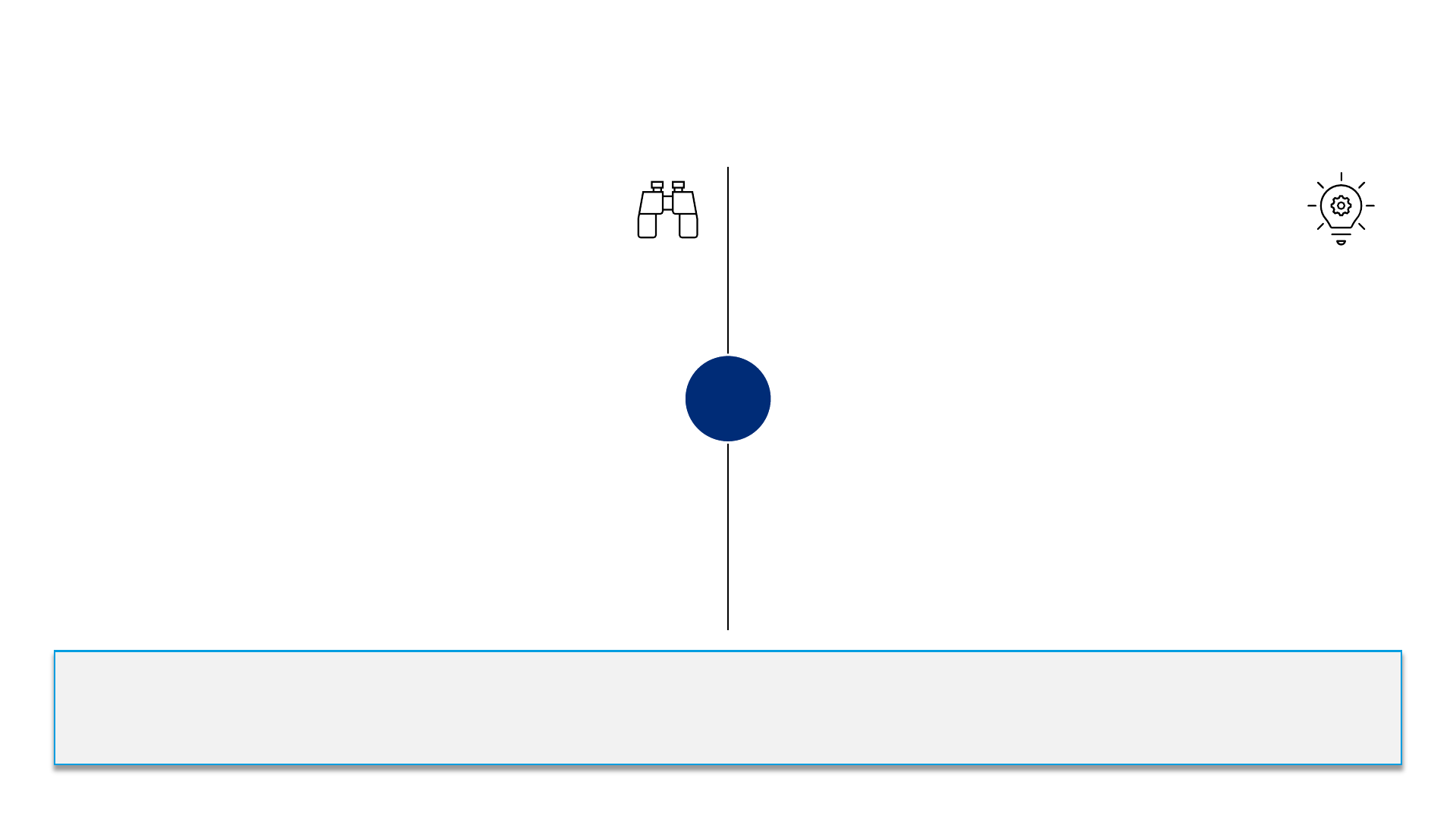
8
© Oliver Wyman
TWO TYPES OF DATA ANALYSIS TO CONSIDER
Both are useful and complementary types of analysis, often employed at distinct stages of research.
VS
Objective: Identify and measure a phenomenon
What is happening?
• Exploratory in nature, it will usually entail a variety of graphs and metrics:
1. Trends over time
2. Summary Statistics (mean, median, etc.)
3. Geospatial visualization
4. Etc.
• It summarizes the data and its patterns but doesn’t go into reasons or
causes behind them
• Will usually need to come first, as any further analysis would depend on
the results of this exploration
Descriptive Analysis
Objective: Identify the root causes of a phenomenon
Why is it happening?
• Explanatory analysis delves deeper in order to discern relationships between
variables:
1. Forming hypotheses and testing their validity
2. Measuring/assessing correlations
3. Etc.
• Since it is aimed at identifying causes & reasons behind a pattern, it will
usually come as part of a second iteration; once the phenomenon is clearly
identified and its magnitude well understood
Explanatory Analysis
Given our study was a first dive into the topic on behalf of the state of Colorado, its content was predominantly descriptive. The main priority was to
translate anecdotes into facts in order to guide next steps.
To the extent that some hypotheses could be formed a priori (e.g., with regards to wildfire), some explanatory components have been factored in as well.
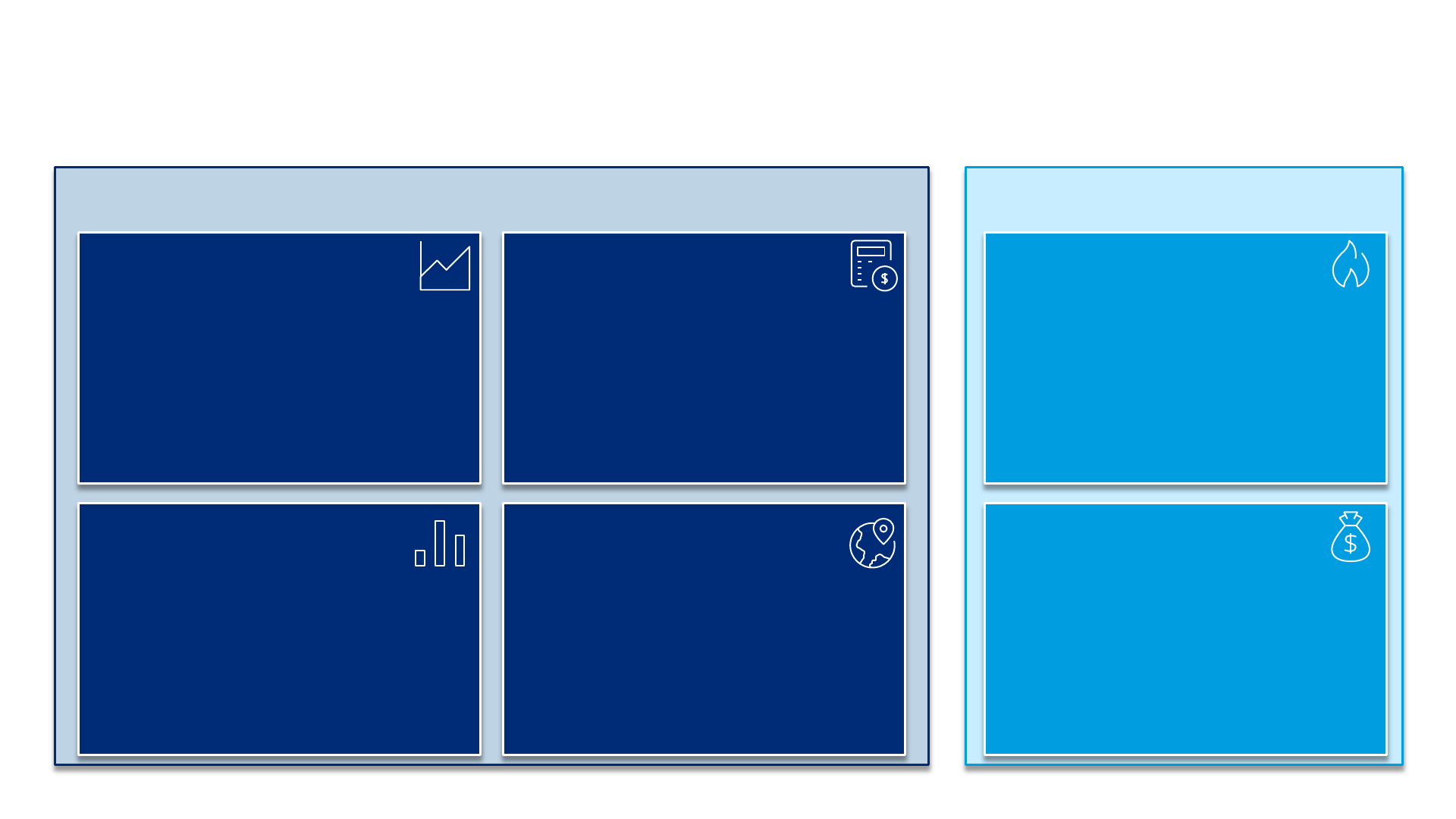
9
© Oliver Wyman
Descriptive Features
Are there availability/affordability concerns in the state and if so, where?
Explanatory Features
What might be driving these results?
Trends in Premiums & Exposures Over Time
• How did the average Homeowner premium grow
between Jan-2019 and Oct-2022; did it outpace
inflation and/or trends from other states?
• How did the number of houses insured grow
between Jan-2019 and Oct-2022; does it seem
consistent with new housing developments?
Distribution of Carrier Results
• Are carrier-level trends in premiums and
exposures homogeneous or heterogeneous?
• Are there notable difference in behavior
between the largest carriers and the smaller
ones?
Correlation of Results and Wildfire Risk
• Have ZIP codes with high wildfire exposure
experienced higher premium increases in 2022?
• Have ZIP codes with high wildfire exposure
experienced more exposure shrinkage in 2022?
Historical Profitability vs Rest of Country
• Does the historical profitability of the state vs
the rest of the country align with the trends in
premiums/rate changes observed?
Filed Rate Changes
• Are carriers filing for more rate increases in
Colorado than in the rest of the country?
Results Visualization by ZIP Code
• Do 2022 movements in average premiums and
exposure counts appear more concerning in
certain areas of the state?
• Which counties have seen the most premium
increases/exposures shrinkage?
ANALYSIS TOPICS OF THE COLORADO STUDY
Our primary goal was to identify and measure the existence of availability/affordability concerns in the state (i.e., descriptive)

Information Sources
3
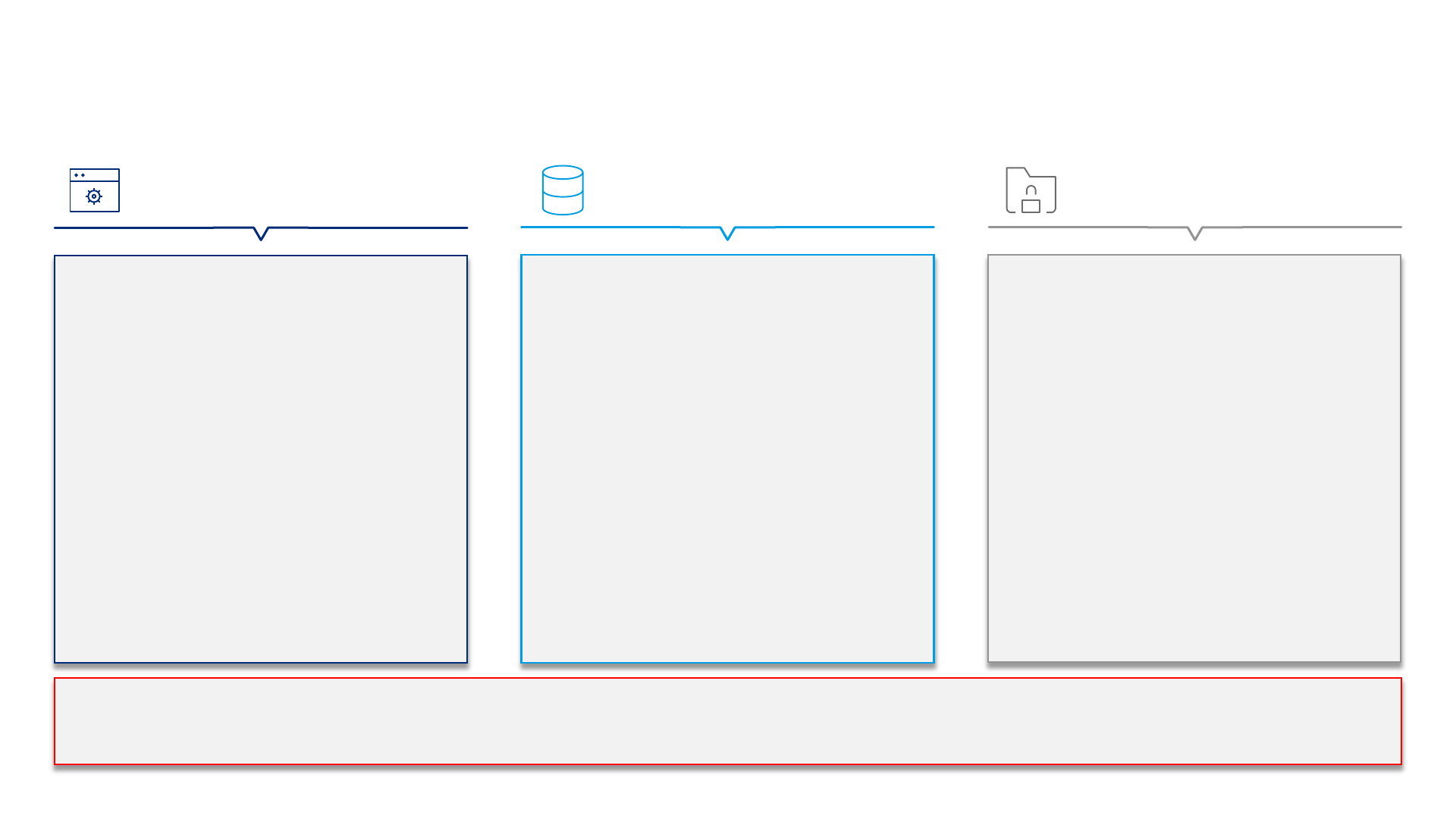
11
© Oliver Wyman
3 SOURCES OF INFORMATION WERE USED IN THIS STUDY
The customized data call was the primary data source for this study, the other 2 serving as complements to help explain the results.
Customized Data Call Publicly Available Information Proprietary Data
All carriers writing more than $5m of direct written
premiums for “Homeowners Multi Peril” in
Colorado were subject to a data call.
The data call was necessary in order to assess the
following topics regarding availability/affordability
in the state:
i. Presence of significant trends in premium
increases or exposures written in 2022
following the Marshall Fire
ii. Identification of areas of concern within the
state
Carriers also received a qualitative survey with
questions regarding pricing & underwriting
practices in the state to help interpret the trends
found in the data and provide additional insights.
1. NAIC Statutory Filings
NAIC data was used in 2 ways in our analysis:
i. Reconciliation: Carrier surveys were reconciled
against reported Homeowners MP market
shares in CO
ii. Historical Loss ratios: Industrywide loss ratios
in CO were compared against the rest of the
country
2. Filed Rate Changes
Impacts from filed rate changes in CO vs the rest of
the country were compared using the filings of the
most material Homeowners MP writers in each
state.
Note: Both were sourced through S&P Market
Intelligence
To assess the wildfire exposure in the state, Oliver
Wyman partnered with their sister company Guy
Carpenter.
Guy Carpenter owns a proprietary wildfire risk
score model (see next section) that has been
presented at the ZIP code level to compare against
trends in premiums and exposures measured.
Data Integrity
Obtaining accurate and consistent data responses across the industry was a somewhat iterative process. Data integrity checks and follow-ups with carriers were a material effort
during the course of the analysis. This is not unexpected given that the data requirements were new. The process would most likely be more straightforward in the future.
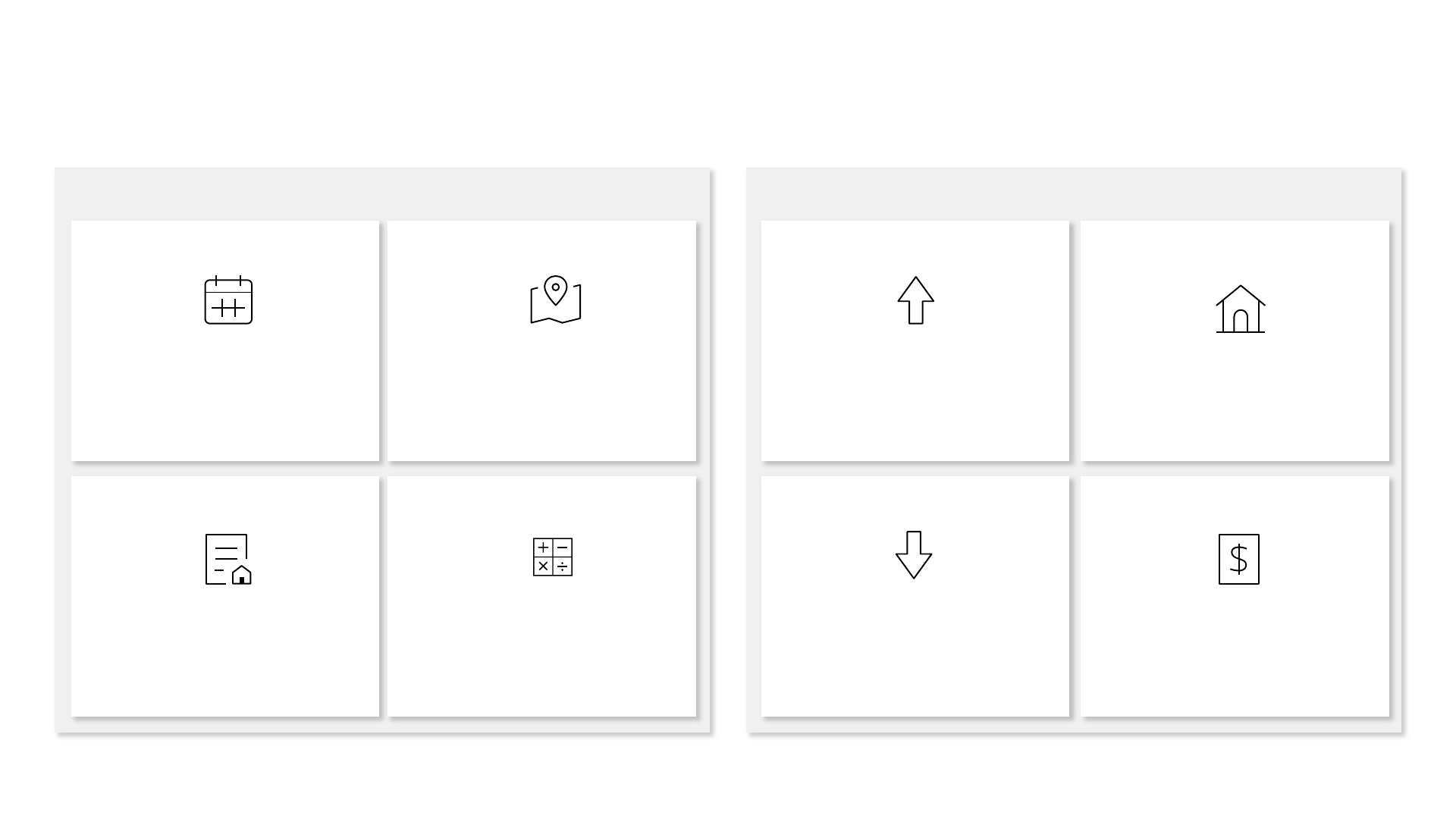
12
© Oliver Wyman
Fields of Interest
Limits
Information Breakdown
Reconciliation
Premiums Exposures
Losses
Monthly Data ZIP-level Data
Product
STRUCTURE OF THE DATA CALL
Data had to be granular enough to conduct our analysis but also sufficiently convenient for carrier to populate accurately.
To provide the most flexibility in
measuring emerging trends in
response to the Marshall Fire
catastrophe.
It is the most granular geographical
unit that is readily available for
reporting purposes.
Homes (HO-3/HO-5), apartments
(HO-4) and condos (HO-6) were split
out given how different the
associated insurance products are.
Instructions required that all surveys
reconcile with the company’s figures
in their statutory filing.
Losses and defense/cost
containment expenses incurred as
well as claim counts
Written, earned and in-force
premiums on a direct basis (prior to
application of reinsurance)
Written, earned and in-force insured
locations (i.e., homes for
homeowners)
Total coverage A limit in-force
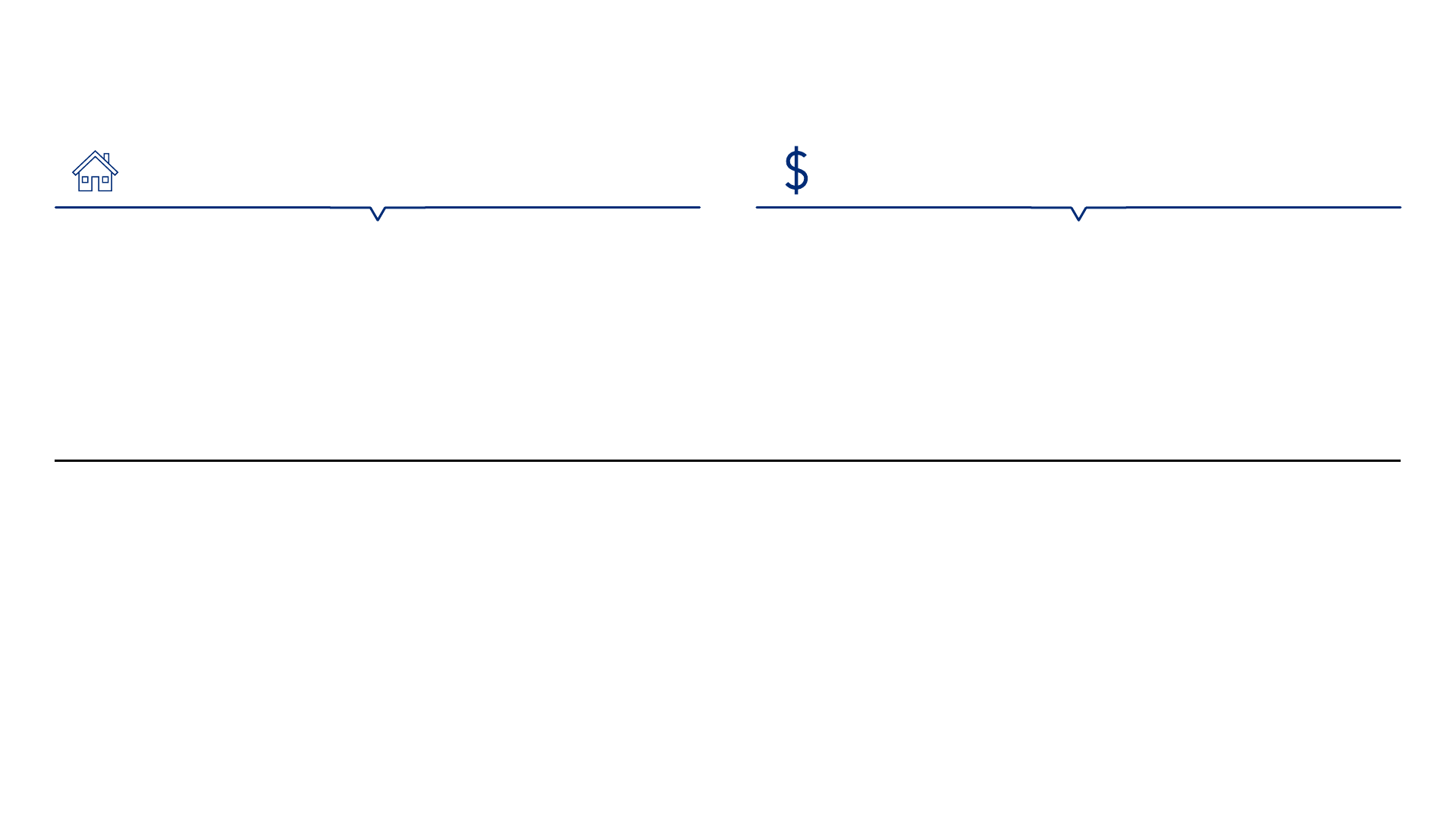
13
© Oliver Wyman
• “Written units” represents the number of homes for which insurance
policies are sold each month.
• For “Homeowners” policy types, one written unit represents one
personal property insured for one year (e.g., one HO-3 policy).
• An industry-wide decrease in written units would indicate that fewer
households are protected by insurance policies year-over-year.
• Average premium is defined as Written Premiums / Written Units.
• It represents the average annual premium per written unit.
• Carriers will increase rates when in their perception, the current
premium will no longer be high enough to cover the projected loss and
expense levels.
• For example, this would happen if actuarial analyses highlight an
increasing frequency and/or severity of losses vs prior estimates.
Written Units
Trends
Average Premium
Trends
VS
KEY METRICS ANALYZED IN THE STUDY
These two metrics are key indicators of the availability/affordability situation in the state
Additional Reporting
Considerations
• “Homeowners” policy types only: The following exhibits are specifically focused on pure homeowner policies (i.e., excluding Renters & Condos).
• Year-to-date figures: These exhibits contain data from January through October for each year.
• Group-level figures: The data call was made at the company level, but then rolled up at the group level for analytical purposes. Each group only
contains the volume from its underlying entities writing more than $5M in direct premiums in the state of Colorado.
• Top 5 carrier groups: Where applicable, any reference to “Top 5 Carrier groups” is intended to represent the 5 largest groups in the state: State Farm,
Liberty Mutual, USAA, American Family & Allstate. In 2021, these 5 groups represented 65% of the “Homeowners Multi-Peril” market in Colorado.
1
1
: S&P Market Intelligence

Catastrophic Exposures
4

15
© Oliver Wyman
• Look at historical patterns to predict future risk
• Assumption that the past is representative of the future
• Main process followed by actuaries to price insurance products
Backward-Looking Risk Assessment
• Rather than relying on historical patterns alone, create models that
proactively factor in cutting-edge scientific knowledge to make
projections about the future, often simulation-based
• Extensive domain expertise and careful consideration are needed to
calibrate adequately the assumptions and scenarios that underlie
these models
Forward-Looking Risk Assessment
This works for well-established insurance products with lots of
data, but not so much for emerging risks and catastrophic
events
Used by insurers to predict future costs of catastrophic perils:
Hurricanes, Earthquakes, Wildfires, etc.
ASSESSING CATASTROPHIC RISK: PAST IS NOT ALWAYS INDICATIVE OF THE FUTURE
Where data is sparse and/or volatile, insurers often rely on scientific models to assess the risk rather than historical data alone.
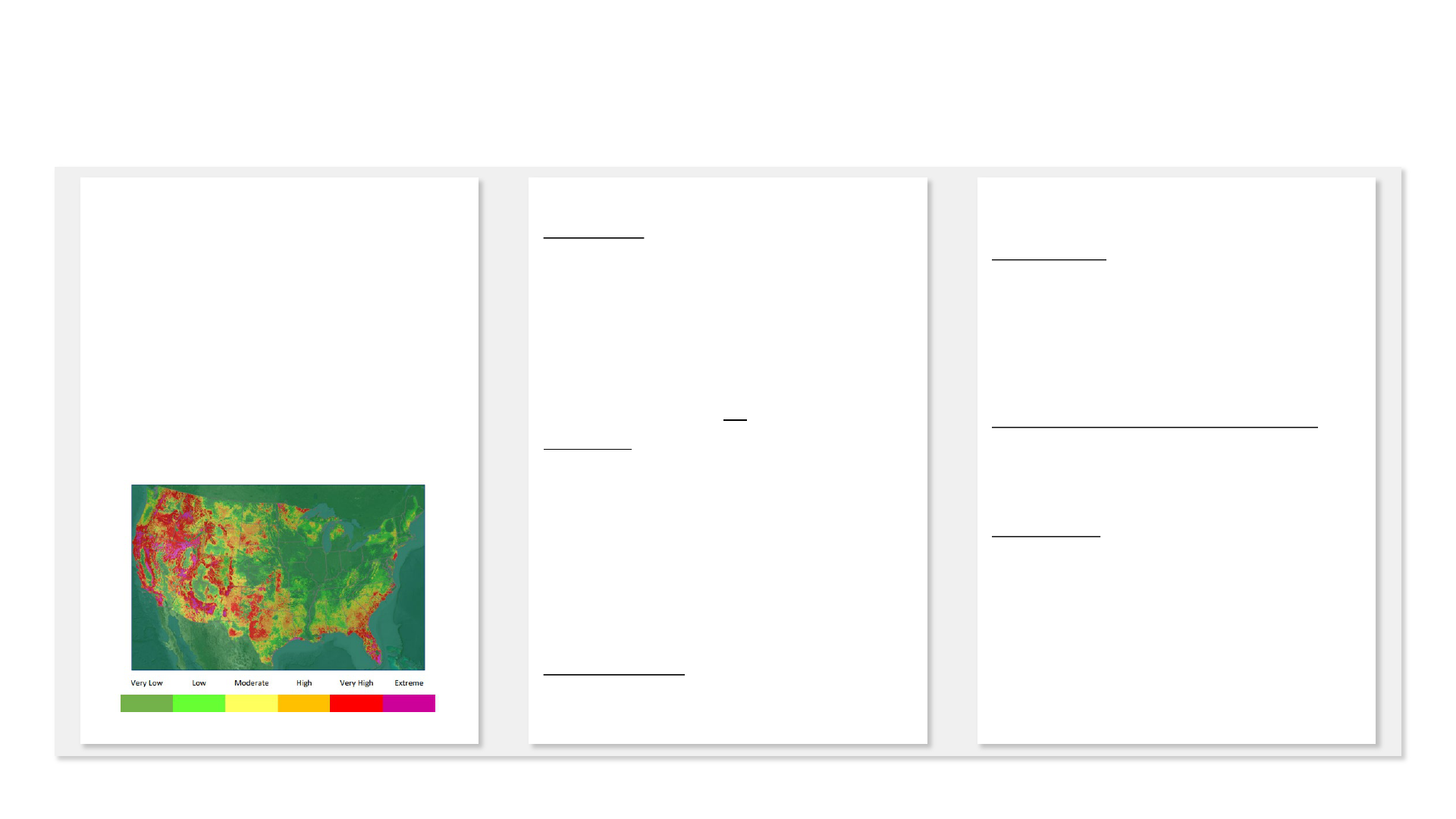
16
© Oliver Wyman
GUY CARPENTER’S WILDFIRE RISK SCORE
This tool allowed us to reconcile the availability findings with each region’s wildfire exposure
The Tool Applications for this projectSpecifications
• Enhanced & repurposed version of the US Forest
Service’s (USFS) Wildfire Hazard Potential for
insurance usage.
• Classifies the US territory into 6 categories of
wildfire hazard grades, from Very Low to Extreme.
• Developed for P&C insurers to enable an
evaluation of wildfire risk at the location level.
• Scores are updated periodically to reflect updates
to data sources & refinements in methodology.
Baseline: USFS
1
• USFS’s Wildfire Hazard Potential represents a
combined view of wildfire likelihood & intensity.
• It uses multiple spatial datasets:
• Data produced for the Large Fire Simulator
• Fuel & vegetation data (LANDFIRE)
• Past fire occurrences (1992-2015).
• Primary purpose is to identify areas that require
vegetation treatment, not
explicit wildfire risk.
Adjustments
• Fire Intensity: Based on conditional flame length,
adjusts for the potential for structure damage.
• Fire Suppression: Adjusts for enhanced
suppression response in highly populated areas.
• Spatial Smoothing: Reduce cell-to-cell volatility
and capture ember transport.
• Ignition Frequency: Adjust score in areas without
recent ignitions.
Local Enhancements
• Apply a factor based on granular 30m resolution
data, considering fuel, slope, and aspect.
1
: From the US Forest Service’s website. Source: Guy Carpenter
Risk Assessment
• This model can identify Colorado’s high-risk areas
at a very high level of granularity.
• This wildfire exposure can be translated at the Zip
Code level using satellite imagery, by counting the
building footprints falling under each hazard grade.
Interpretation of recent trends in industry data
• We were then be able to compare our findings in
terms of premium increases & coverage
restrictions to each area’s wildfire exposure.
Important Note
• While the model is highly granular (30m
resolution), the full benefit of this granularity is not
realized when the results are summarized at a zip
code or county level.

17
© Oliver Wyman
2. Localization of buildings
on the wildfire map
All buildings get located on GC’s
wildfire map
1. Microsoft Building Footprints
Estimation of all building structures in the
US using AI & Satellite imagery.
4. Percentage of Structures in
High to Extreme Areas*
The proportion of buildings with a
wildfire score of “high or above”
within a Zip Code is used to assess
the wildfire exposure in that area.
3. Wildfire score assignation
Each building receives a score
based on the area of the wildfire
map they fall into.
ESTIMATION OF WILDFIRE EXPOSURE BY ZIP CODE
The detailed wildfire map has been translated at the Zip Code level using satellite imagery
https://www.microsoft.com/en-us/maps/building-footprints
Source: Guy Carpenter, Oliver Wyman Analysis

18
© Oliver Wyman
KEY FINDINGS: COLORADO WILDFIRE EXPOSURE
Source: Guy Carpenter’s wildfire risk score, ESRI dataset of U.S. ZIP Codes (from ArcGIS), Oliver Wyman Analysis
Color Scale Disclaimer
Any ZIP code not depicted with the darkest shade of green presents some
exposure to areas with high-or-above risk of wildfire.
Note: Blank shadings indicate areas where a score was not available. Different ZIP
code extraction dates between GC and OW are causing a handful of discrepancies.
Representation of wildfire risk in Colorado at the ZIP code level
Measured as the % of building structures found in areas of “high”, “very high” or “extreme” risk
Wildfire Exposure in Colorado
Wildfires are believed to have played a material role in Colorado’s loss
experience in recent years, and such it is anticipated that at least some of
the measures implemented by carriers (such as non-renewals and
tightening underwriting criteria) are targeted at controlling this risk.
There is indeed significant wildfire exposure in the state. The map on the
left combines Guy Carpenter’s wildfire risk score and satellite imagery to
estimate the level of wildfire exposure found in each ZIP code of the state.
This wildfire exposure is largely concentrated in two bands of land that run
across the state from North to South, with the easternmost band running
close to the densely populated areas of Denver, Colorado Springs & Fort
Collins.
High-or-Above Areas of Wildfire Risk
The wildfire map segments the US territory into zones representing exponentially
more risk of wildfire. The risk starts becoming more material once we reach the
“High” zone and above.
The exposure at the ZIP code level is estimated by counting the building structures
that fall under high-or-above areas using satellite imagery. Overall this represents
16.64% of building structures in Colorado.
High-or-above %
100%
80%
60%
40%
20%
0%

From Data to Insights
5
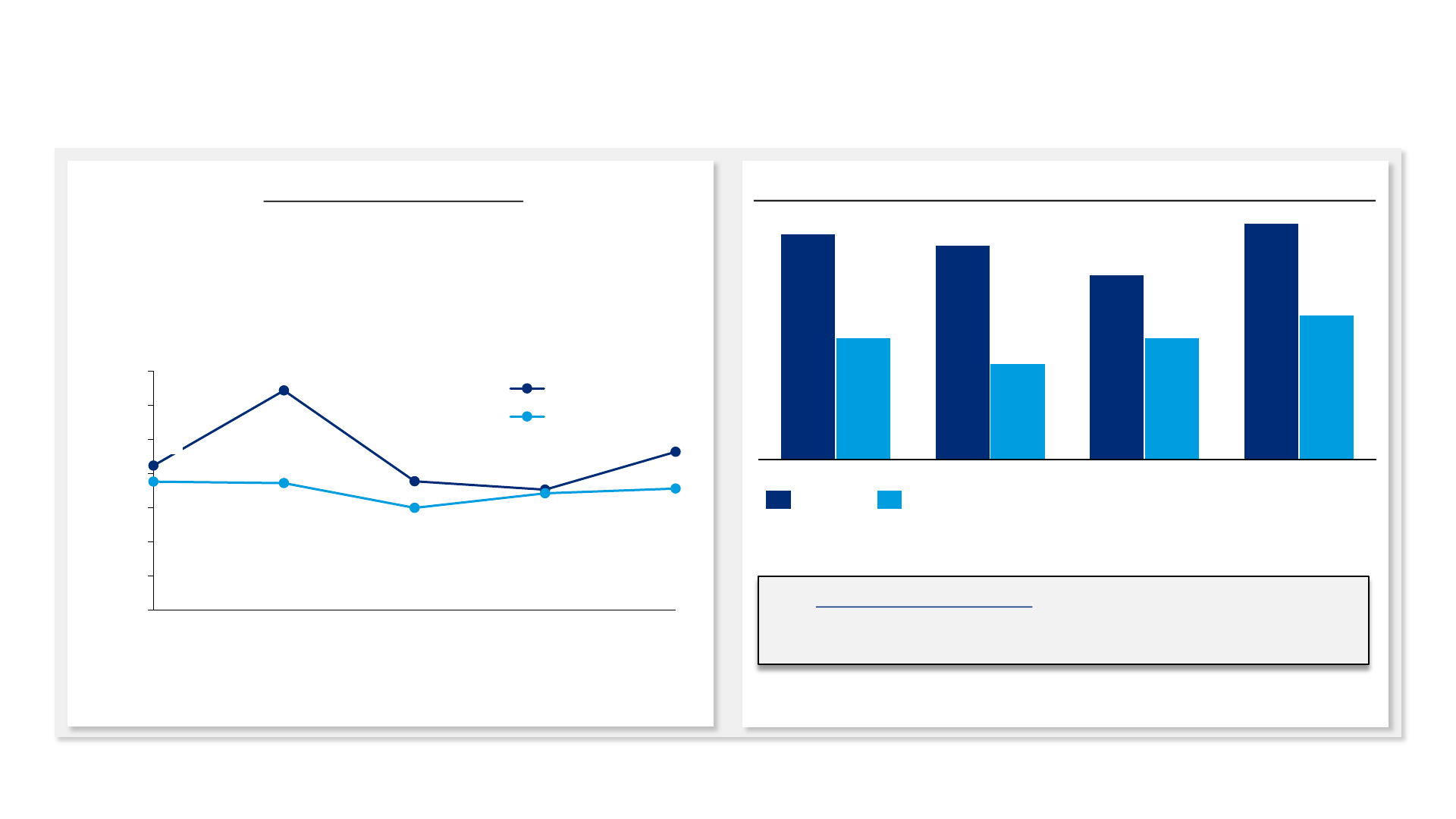
20
© Oliver Wyman
5-Year Loss Ratio Assessment
The Colorado “Homeowners Multi-Peril” market has been struggling
over the recent years from a profitability standpoint.
Colorado’s Loss & DCC
1
ratios have consistently been above
countrywide averages, leading each time to an underwriting loss for the
industry:
KEY FINDINGS: STATE OF THE COLORADO MARKET
Source: S&P Market Intelligence, Oliver Wyman Analysis.
Copyright © 2022, S&P Global Market Intelligence. Reproduction of any information, data or material, including ratings (“Content”) in any form is prohibited except with the prior written permission of the relevant party. S&P and their content
providers are not responsible for any errors obtained as a result of usage of such Content and will not be liable for any damages in connection with the use of this content.
1
: DCC stands for Defense & Cost-Containment Expenses. It refers to the costs of adjusting a specific claim, and represents roughly 1%-2% of Earned Premiums for the “Homeowners Multi-Peril”.
129
76
71
93
75
74
60
68
71
0
20
40
60
80
100
120
140
20212017 2018 2019 2020
Direct Loss & DCC Ratio
85
Calendar Year
Colorado
Countrywide
Approved rate changes by year – Homeowners MP – Selected Carriers
1
1
: Derived from the rate filings of top national carriers (~Top 10) in each state.
The magnitude of the difference between rate adjustments undertaken in
the state vs the rest of the country highlights the industry’s perspective on
the profitability of homeowner policies in the state.
6.1%
3.3%
2018
3.3%
2019
2.6%
5.8%
5.0%
2020
6.4%
3.9%
2021
Colorado Countrywide
Source: S&P Market Intelligence, Oliver Wyman Analysis.
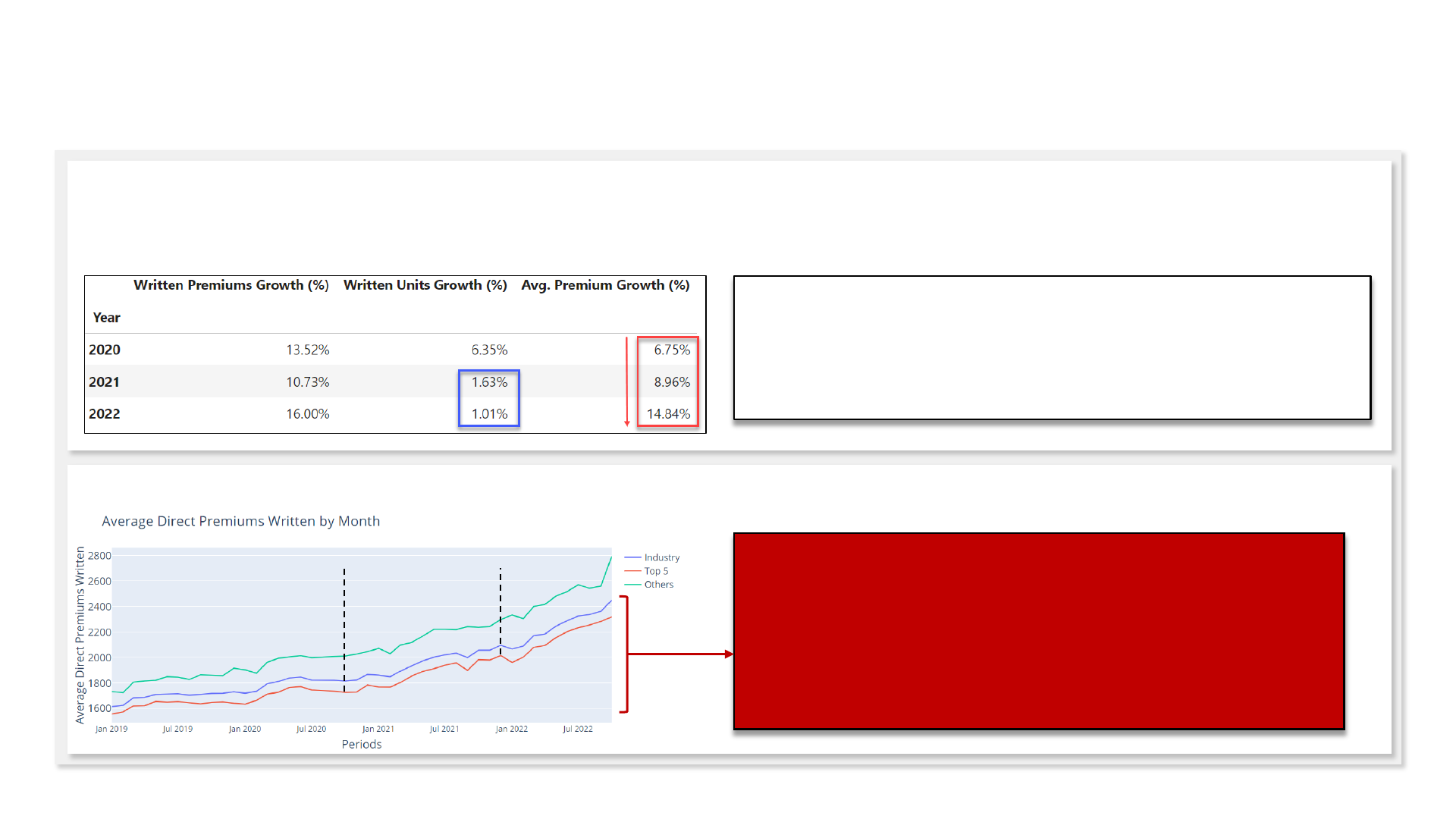
21
© Oliver Wyman
Measured annually, average premiums have increased significantly between 2019 and 2022, and at an accelerating pace.
Measured on a monthly basis, the magnitude of increases is even clearer, standing at +51.7% between January 2019 and October 2022.
KEY FINDINGS: TRENDS IN AVERAGE PREMIUMS
• The industry average premium is up +51.7% over the analysis period (46
months), or +11.5% annually.
• Inflection points are observed concurrent with the major wildfires.
• Inflation and efforts to improve rate adequacy are likely other key
contributors to the increases over time.
• The increase since the beginning of 2022 is +18.6%, or +22.7% annually.
Marshall Fire
East Troublesome Fire
Source: Colorado “Homeowners MP” data surveyed from carriers as-of October 2022, filtered on “Homeowners” policy type, Oliver Wyman Analysis.
Average premiums have been increasing significantly over the last 3 years, and at
an increasing rate.
In terms of total exposures written, the industry is still growing on a year-to-date
basis, although the trend is headed downwards with time. In fact, on a quarterly
basis growth is now reaching 0% as-of 2022-Q3 (see next slide).
Industry movements in premiums & exposures – October 2022 year-to-date
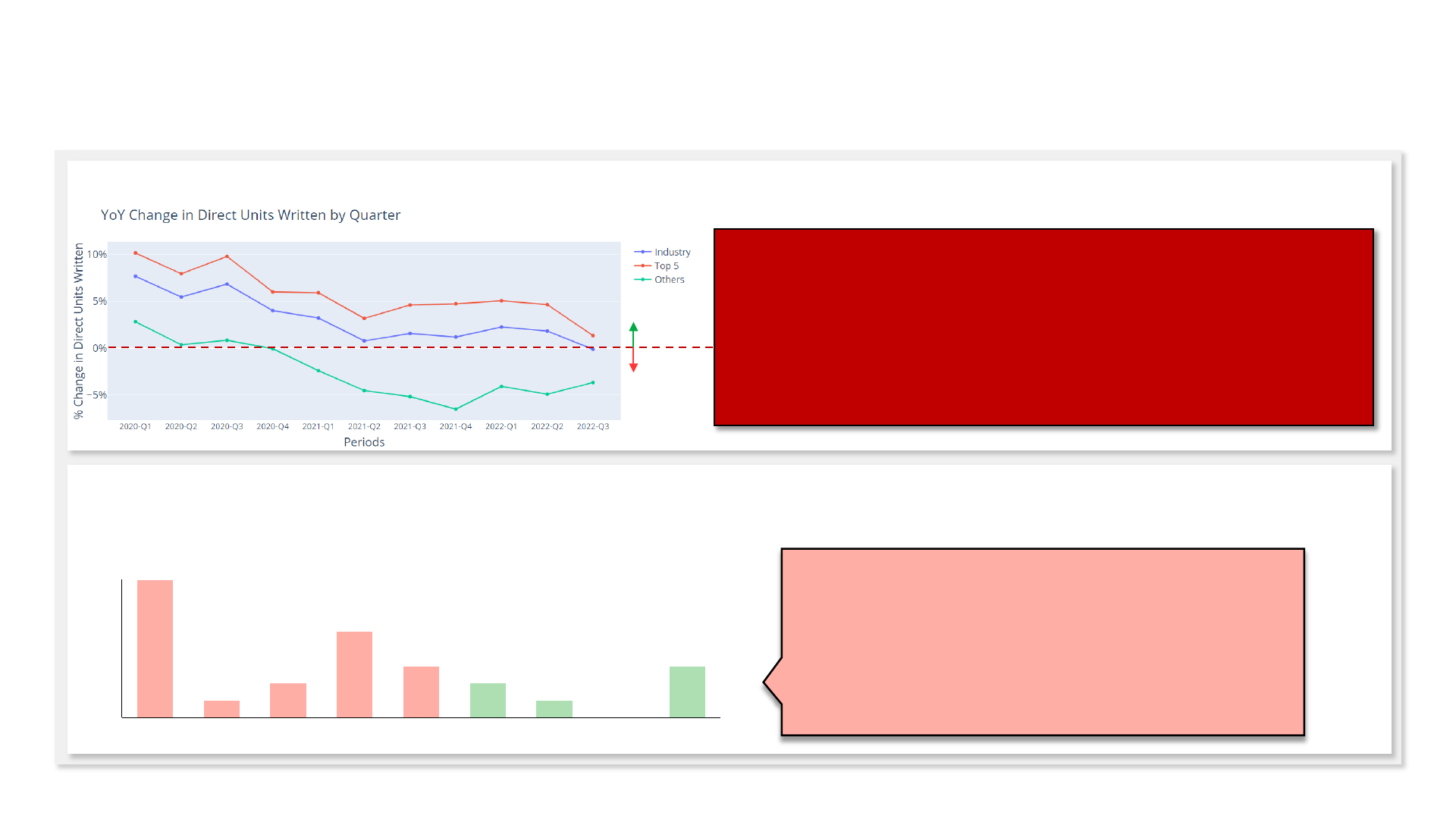
22
© Oliver Wyman
The growth in written units observed at the industry level is driven by the largest carrier groups; others have been shrinking in the last 2 years.
A majority of carrier groups have been shrinking their exposures in the state in 2022 (YTD-October)
KEY FINDINGS: TRENDS IN WRITTEN EXPOSURES
8
1
2
5
3
2
1
3
0
6
2
4
8
Number of Carrier groups
[-12.5% to
-10.0%[
[-10.0%
to -7.5%[
[-7.5% to
-5.0%[
[-5.0% to
-2.5%[
[-2.5%
to 0.0%[
[0.0% to
2.5%[
[2.5% to
5.0%[
[5.0% to
7.5%[
7.5% or
above
Distribution of carrier-level variation in written units – 2022 year-to-date
• The industry as a whole has been growing (at a generally declining pace) since 2020.
However, outside of the top 5 carrier groups, exposures have been materially shrinking
since 2020-Q4.
• Growth in the overall industry & Top 5 carrier groups has leveled off, just reaching 0%
growth for the first time in 2022-Q3. Larger concerns may lie ahead if the largest
carriers are also starting to reassess their appetite.
• A market consolidation appears to be taking place in Colorado, with the largest carriers
taking a bigger piece of the pie.
Through October 2022 year-to-date, 76% of carrier groups have
written fewer policies than during the same period last year.
Furthermore, a material 32% of carrier groups are even down more
than 10% over the period.
At the industry level this is offset by some larger carriers picking up
a portion of the risks left out by others.
Growth
Shrinkage
Source: Colorado “Homeowners MP” data surveyed from carriers as-of October 2022, filtered on “Homeowners” policy type, Oliver Wyman Analysis
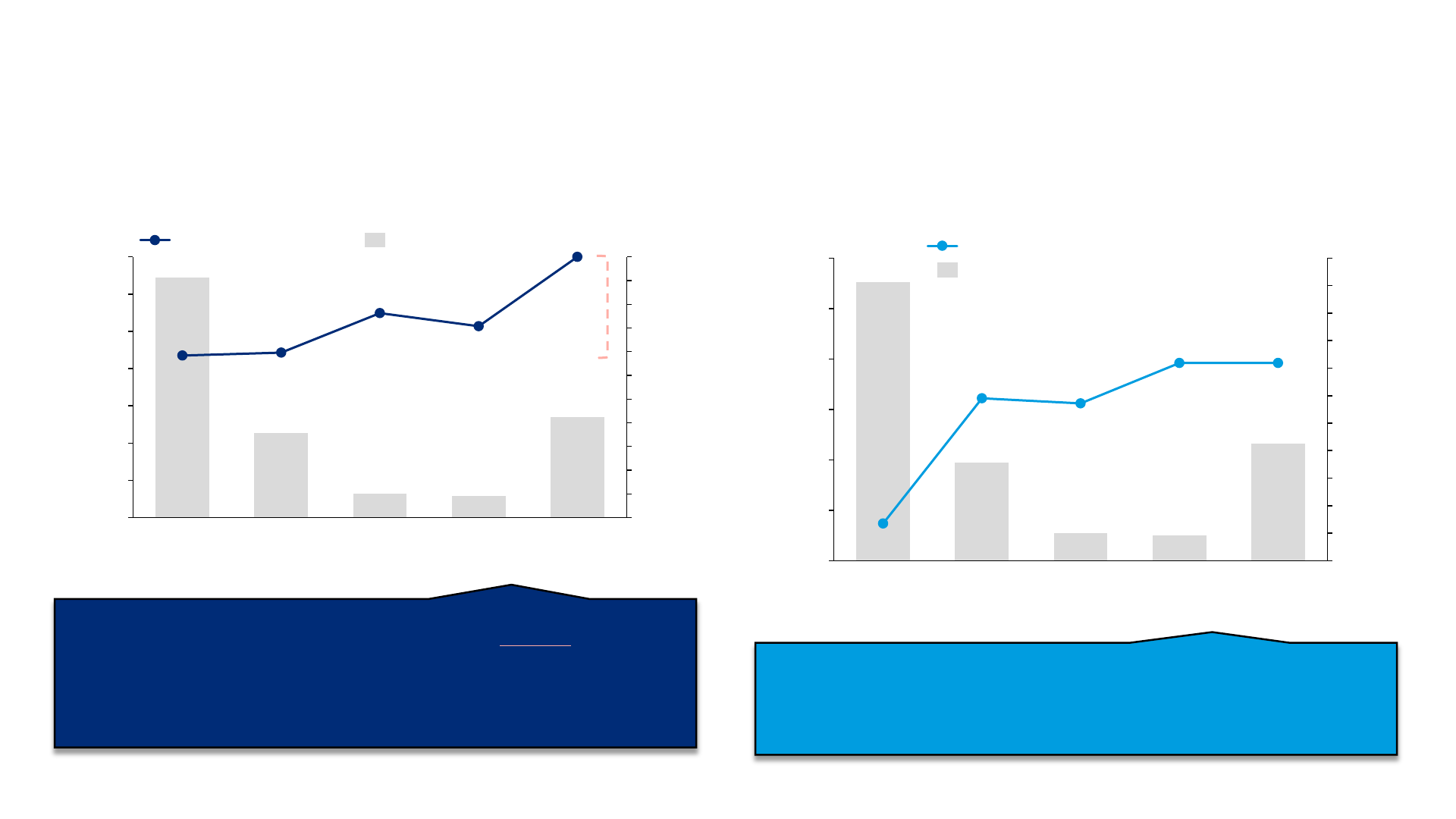
23
© Oliver Wyman
KEY FINDINGS: CORRELATION WITH WILDFIRE RISK
Growth in written units vs wildfire risk in the ZIP code – 2022 YTD
0
5
10
15
20
25
30
35
40
45
50
55
1.0%
2.5%
1.5%
2.0%
0.0%
0.5%
3.0%
51%
Portion of buildings in “high-or-above” wildfire area
21%
Portion of CO ZIP Codes in range
Growth in direct units written – 2022 YTD
0.37%
<= 0.01%
1.61%
18%
]0.01% to 15%]
1.56%
5%
]15% to 30%]
1.96%
5%
]30% to 50%]
1.96%
> 50%
Written Units Growth
Portion of ZIP Codes
Source: Colorado “Homeowners MP” data surveyed from carriers as-of October 2022, filtered on “Homeowners” policy type, Guy Carpenter’s wildfire risk score, Oliver Wyman Analysis
It does not seem like high-risk areas have been subject to greater shrinkage in exposures in
2022.
While some policyholders may be facing significant restrictions in these areas at the carrier
level, this is not the case at the industry level.
Average premium increase vs wildfire risk in the ZIP code – 2022 YTD
0
5
10
15
20
25
30
35
40
45
50
55
13%
10%
11%
12%
15%
14%
16%
17%
]0.01% to 15%]
Portion of buildings in “high-or-above” wildfire area
Portion of CO ZIP Codes in range
Increase in average premium – 2022 YTD
15%
14%
51%
17%
<= 0.01%
14%
18%
15%
5%
]15% to 30%]
5%
21%
]30% to 50%] > 50%
Average Premium Increase Portion of ZIP Codes
Although this graph highlights a positive correlation between the size of premium increases
and the exposure to wildfire risk, it is important to note that the amplitude
between the
smallest and the largest increases remains relatively small (+14% to +17%).
This suggests that the rating actions currently taking place in Colorado are probably much
broader in scope than the wildfire peril alone, although there seems to be some
segmentation with respect to the wildfire peril.
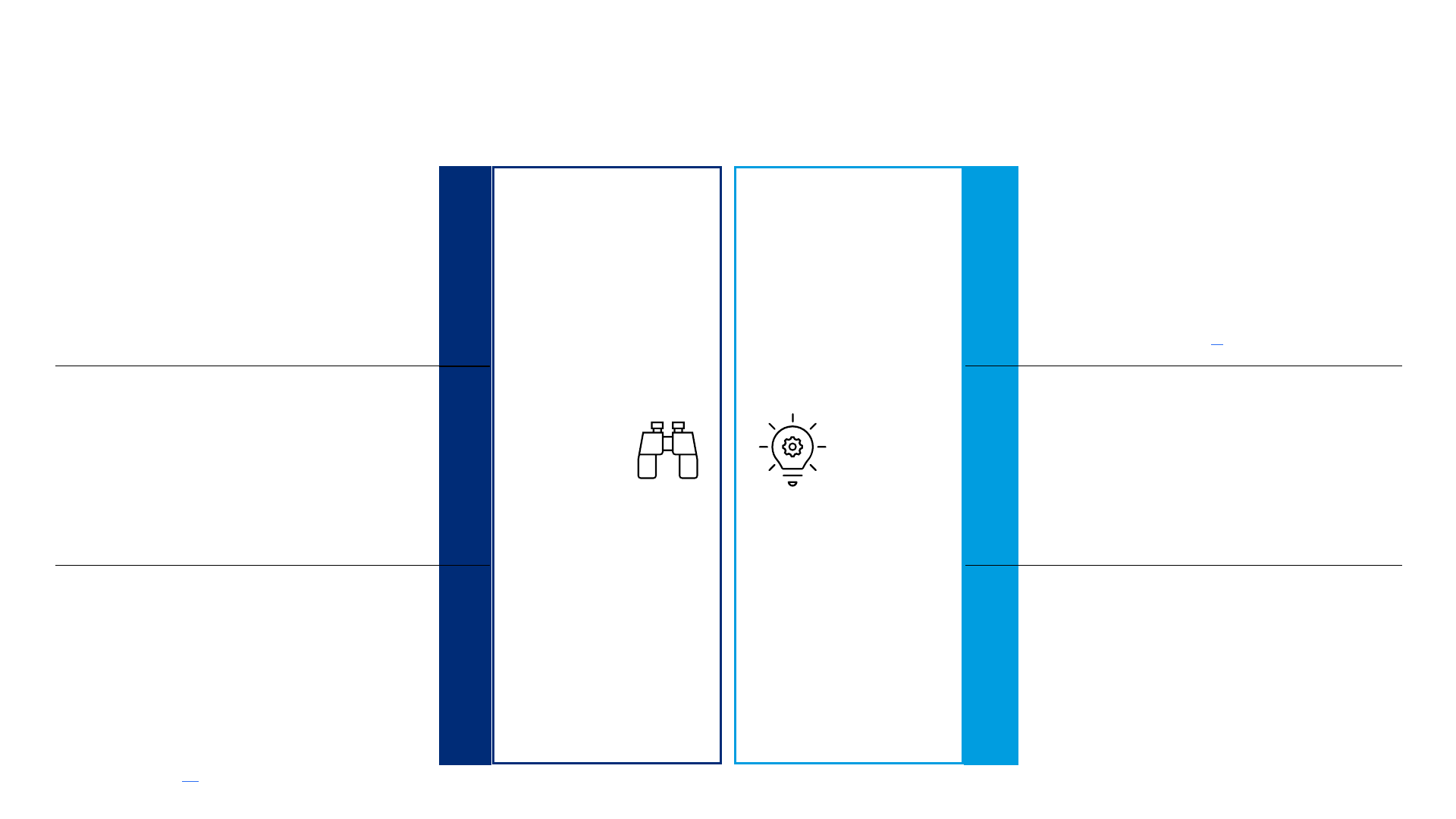
24
© Oliver Wyman
Descriptive
First round of analysis laid the
foundation of a structured
data collection framework.
It can now be updated to
enhance or refresh the
analysis data
Explanatory
Now that the current market
conditions are better
understood and the a priori
hypotheses have been tested,
additional research might be
of interest to understand the
underlying causes.
POSSIBLE ADDITIONAL AREAS OF RESEARCH
Findings stemming from this first analysis on the topic have sparked interest for additional analysis ideas on future iterations.
Timely Data Refresh
Insurance availability/affordability is a time-
sensitive topic that can take quick and significant
turns.
Depending on market signals, it might be beneficial
to have timely refreshes to assess the emerging
trends in 2023.
1
More Granular Exposure Data
Our first iteration was focused on creating a
streamlined process to obtaining structured and
accurate information from all carriers.
Now that this has been achieved, it might be
interesting to enhance the data collection to obtain
more targeted answers, for example by collecting
new business, renewal, and non-renewals data.
2
Inflation-adjusted metrics
The current high-inflationary environment certainly
has an impact on the premium movements
currently observed in the state.
It would be interesting to identify what share of
rate changes/premium increases is driven by
inflation vs other factors.
3
1
Exposure to Other Perils (e.g., Hail)
Our study has shown that the premiums and
exposure swings go beyond the regions at high risk
of wildfire, which highlights other types of
exposures may have played a role.
Hail risk might be an interesting area to examine,
given it has led to multi-billion dollars losses in the
state as recently as 2018.
[1]
2
Historical Profitability Within the State
The current study looked at historical profitability
at the state level in order to answer the most
pressing questions on the topic.
Given the results, in future iterations it might be
interesting to assess to which extent the
underwriting results vary across the geographic
regions of the state.
3
Exposures Growth and Housing Developments
To help understand the industrywide trends in
exposures by county and/or ZIP code, it would be
beneficial to obtain measurable data on the
number of new houses to insure in each region.
This would also allow to assess to which extent new
development are taking place in “high risk” areas.
Source: The Gazette [1]


Disclaimers and limitations
6

27
© Oliver Wyman
• Missing Carriers: Oliver Wyman had initially surveyed 97.3% of Colorado’s “Homeowners Multi-Peril” market shares to produce this study. Some of the surveyed
carriers – either because they did not respond or because material data integrity concerns were identified – had to be excluded from the data analysis. This brought
us down to 95.3% market share available for our analysis, which we feel is sufficient to depict an adequate portrait of the industry in this state. However, we
recognize that in the event where significant movement would be happening within the remaining 4.7% (e.g., significant growth in 2022), this could have an impact
on our findings.
• Discrepancies with NAIC Statements: All carriers were instructed to report premium volumes that reconcile with their NAIC annual statements for “Homeowners
Multi-Peril” in Colorado. We performed a reconciliation, and where the discrepancies were completely unrealistic (in multiples of the NAIC-reported volume), we
contacted the carriers for revision. Smaller discrepancies – which could range from -22% to +22% depending on the carriers & years – have been observed as well.
Depending on the nature & magnitude of volume missing or in excess, findings could be materially impacted by this issue.
• Reliance on Guy Carpenter’s wildfire score: In order to assess the wildfire exposure in the state, we have relied on the wildfire score developed by our sister
company Guy Carpenter. We recognize that different vendors may come to different assessments of the wildfire risk in the state. Also, due to the granularity of the
surveyed data, we represented wildfire exposure at the zip code level. This is an important simplification, as in practice the wildfire risk may vary greatly within a zip
code. Insurers may even rely on geo-coding to properly assess the risk of each policy.
• Data Validations: While we have made several reasonability checks of the data received and created a process that allows for reconciliation of some of the figures
with NAIC statements, this analysis still largely relies on the assumption that insurers answered the survey accurately and in good faith.
• Data Confidentiality: To produce this study, Oliver Wyman surveyed granular data from insurance carriers, and collected detailed information regarding the
companies’ pricing & underwriting methodologies. As our goal was to depict industrywide trends, all the exhibits & findings presented throughout this report are
always aggregated in some way. We did not
highlight information from individual carriers anywhere in this report.
DISCLAIMERS REGARDING DATA LIMITATIONS

28
© Oliver Wyman
QUALIFICATIONS, ASSUMPTIONS, AND LIMITING CONDITIONS: OLIVER WYMAN
Oliver Wyman Actuarial Consulting, Inc. (Oliver Wyman) prepared this report for the State of Colorado’s Division of Insurance (the Agency), to support the Agency in
fulfilling the requirements of SB22-206, C.R.S. § 10-1-143, which requires the commissioner of the Agency to conduct a study and prepare a report concerning methods to
address the stability, availability, and affordability of homeowner’s insurance for Coloradans with a focus on stabilizing the current market.
This report includes important considerations, assumptions, and limitations and, as a result, is intended to be read and used only as a whole, and may not be separated
into, or distributed in, parts.
This report is being provided strictly for information purposes and, in the case of regulators and officers of the Agency, is intended to be used by them solely for the
purposes set forth in SB-22-206 and to fulfil their related legislative, regulatory, administrative, and official functions. This report may not be reproduced, quoted, or
distributed for any other purpose or to any other third party without the prior written permission of Oliver Wyman. All decisions in connection with the implementation or
use of the results, advice or recommendations contained in this report are the sole responsibility of the Agency. Oliver Wyman shall not have any liability to any third party
in respect of this report or any actions taken or decisions made as a consequence of the results, advice or recommendations set forth herein.
The opinions expressed herein are valid only for the purpose stated herein and as of the date hereof.
Information furnished by others, upon which all or portions of this report are based, is believed to be reliable but has not been verified. No warranty is given as to the
accuracy of such information. Public information and industry and statistical data are from sources Oliver Wyman deems to be reliable; however, Oliver Wyman makes no
representation as to the accuracy or completeness of such information and has accepted the information without further verification. No responsibility is taken for
changes in market conditions or laws or regulations and no obligation is assumed to revise this report to reflect changes, events or conditions, which occur subsequent to
the date hereof.

29
© Oliver Wyman
QUALIFICATIONS, ASSUMPTIONS, AND LIMITING CONDITIONS: GUY CARPENTER
The data and analysis provided by Guy Carpenter herein or in connection herewith are provided “as is,” without warranty of any kind whether express or implied. The
analysis is based upon data provided by the Agency or obtained from external sources, the accuracy of which has not been independently verified by Guy Carpenter.
Neither Guy Carpenter, its affiliates, nor their officers, directors, agents, modelers, or subcontractors (collectively, “Providers”) guarantee or warrant the correctness,
completeness, currentness, merchantability, or fitness for a particular purpose of such data and analysis.
The data and analysis are provided strictly for information purposes, may not be separated into, or distributed in, parts, and may not be reproduced, quoted, or distributed
for any other purpose or to any other third party without the prior written permission of Guy Carpenter. In no event will any Provider be liable for loss of profits or any
other indirect, special, incidental and/or consequential damage of any kind howsoever incurred or designated, arising from any use of the data and analysis provided
herein or in connection herewith.
There are many limitations on actuarial or modeling analyses, including uncertainty in the estimates and reliance on data. We will provide additional information regarding
these limitations upon request.
As with any analysis, the results presented herein are subject to significant variability. While these estimates represent our best professional judgment, it is probable that
the actual results will differ from those projected. The degree of such variability could be substantial and could be in either direction from our estimates.
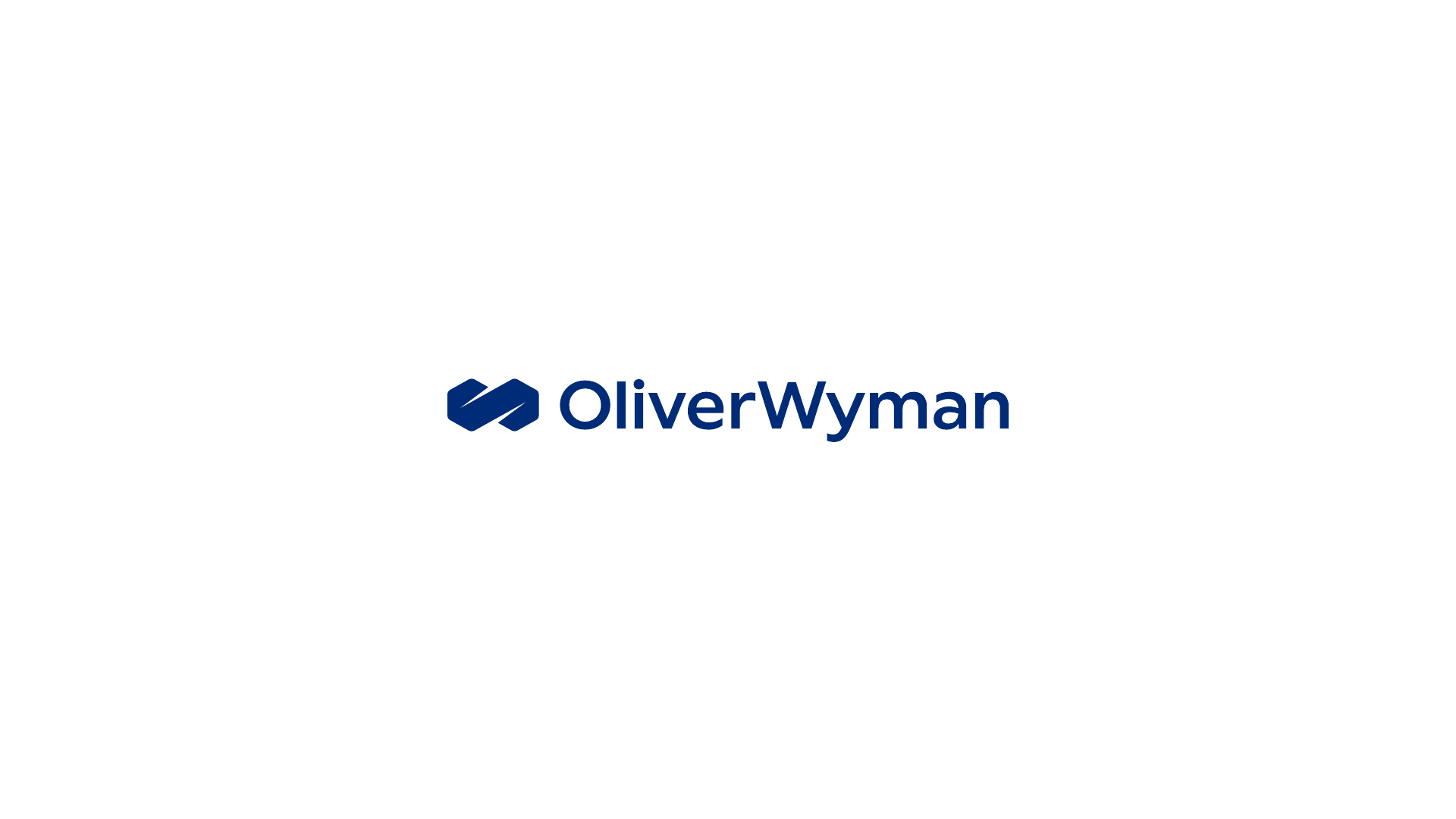
A business of Marsh McLennan
